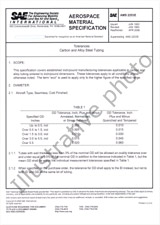We need your consent to use the individual data so that you can see information about your interests, among other things. Click "OK" to give your consent.

The information about the standard:
Designation standards: SAE J473
Publication date standards: 1.8.2018
SKU: NS-857691
Country: American technical standard
Category: Technical standards SAE
Annotation of standard text SAE J473 :
The choice of the type and grade of solder for any specific purpose will depend on the materials to be joined and the method of applying. Those with higher amounts of tin usually wet and bond more readily and have a narrower semi-molten range than lower amounts of tin.
For strictly economic reasons, it is recommended that the grade of solder metal be selected that contains least amount of tin required to give suitable flowing and adhesive qualities for application.
All the lead-tin solders, with or without antimony, are usually suitable for joining steel and copper base alloys. For galvanized steel or zinc, only Class A solders should be used. Class B solders, containing antimony usually as a substitute for some of the tin or to increase strength and hardness of the filler metal, form intermetallic antimony-zinc compounds, causing the joint to become embrittled. Lead-tin solders are not recommended for joining aluminum, magnesium, or stainless steel.
Permissible impurity levels are shown:
In dipping solders, 0.5% max copper is permissible because of pickup in bath.
Compositions, temperatures, and similar specifications of these SAE solders are shown in Table 1.
SUBFILE: Automotive
TYPE OF DOCUMENT: Ground Vehicle Standard
Stabilized: Aug 2018 
We recommend:
Technical standards updating
Do you want to make sure you use only the valid technical standards?
We can offer you a solution which will provide you a monthly overview concerning the updating of standards which you use.
Would you like to know more? Look at this page.



 Cookies
Cookies
